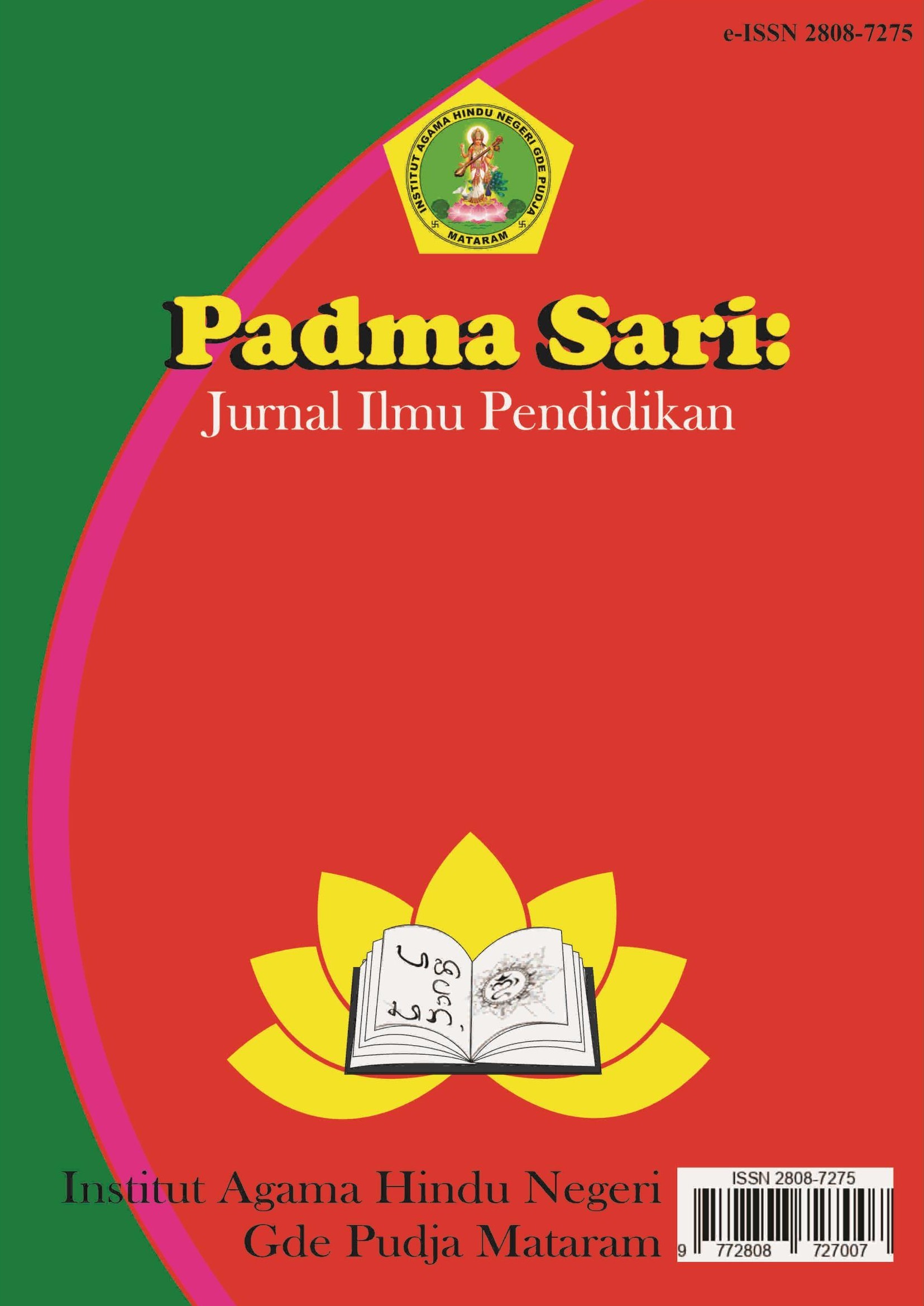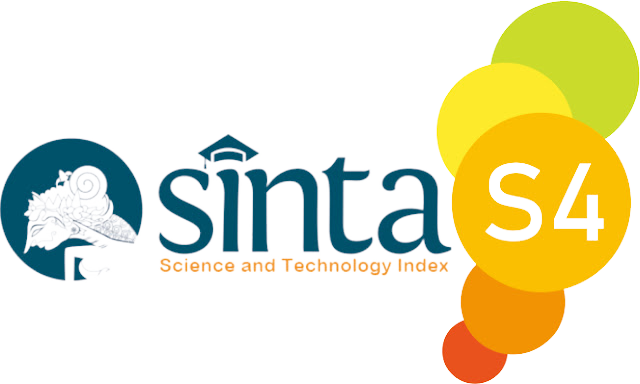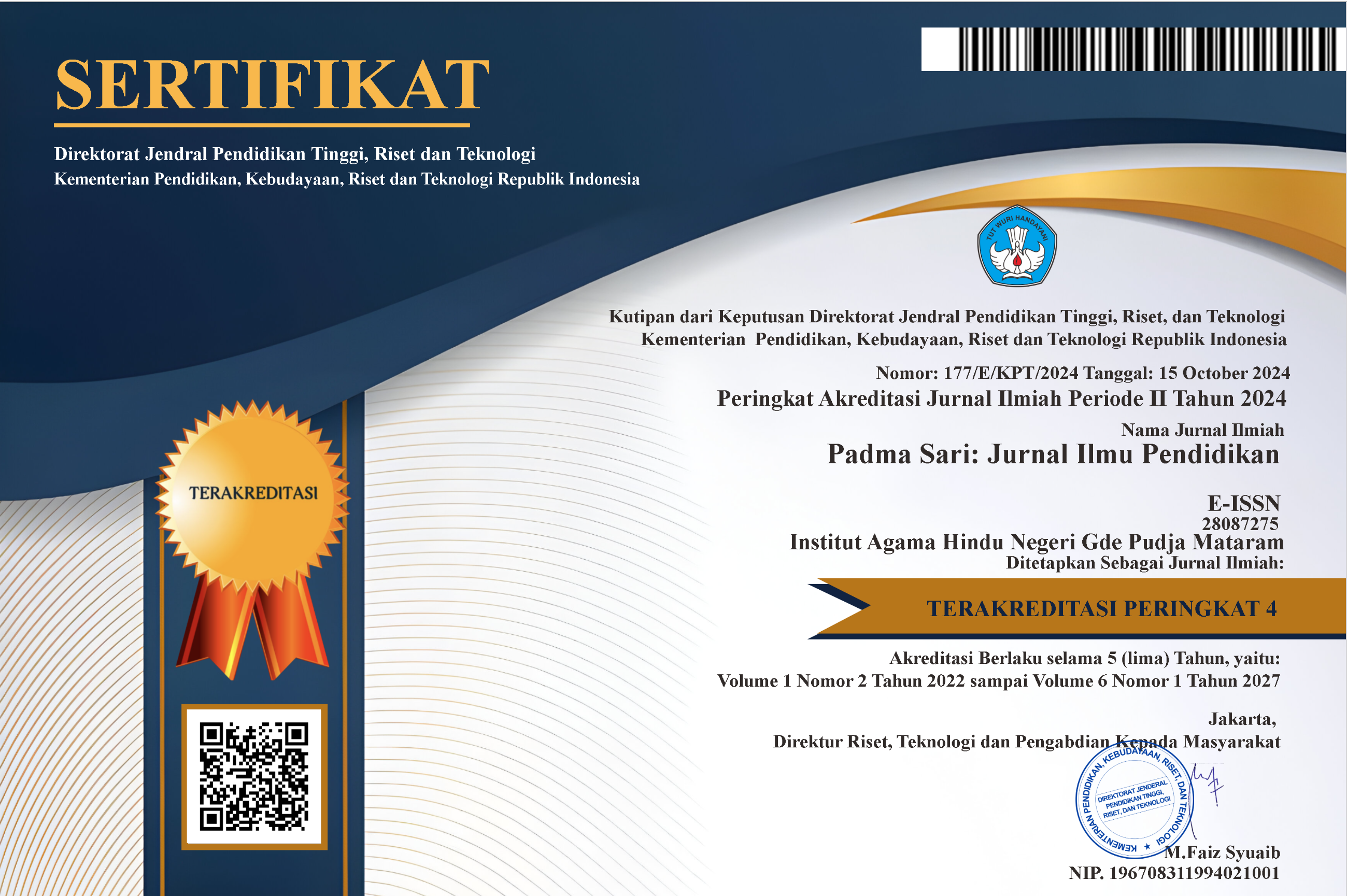STRATEGI PENGELOLA PASRAMAN DALAM PENINGKATAN KUALITAS PEMBELAJARAN AGAMA HINDU (STUDI KASUS PADA PASRAMAN SAMIAGA MATARAM)
Abstract
This study aims to analyze the description of the strategy of the Pasraman Samiaga Mataram manager in improving the quality of Hindu religious learning. The research problems that are used as the basis are (1) the existence of the Pasraman Samiaga Mataram in strengthening Hindu religious education, (2) the management strategy of the Pasraman Samiaga Mataram in improving the quality of Hindu religious learning, and (3) improving the quality of Hindu religious learning at the Pasraman Samiaga Mataram. This research uses a case study approach with qualitative research, and this study uses data collection techniques with participant observation, structured interviews, and documentation. Researchers' data analysis techniques in this study are data reduction, presentation, and conclusion. The findings in this study are supported by the theory of Behaviorism (Thorndike). This study explains that the existence of Pasraman Samiaga Mataram was formed in February 2016 by a husband and wife who initially did not have a registration letter. Now they have and are legal entities. Until now the facilities are sufficient. The strategy for managing the Pasraman Samiaga Mataram in improving the quality of learning is as follows: first, applying peer tutor learning methods, group discussions, and learning while playing methods; second, providing practice in any material that requires practice; third, practicing the teachings of sad dharma; fourth, giving a particular class with an individual approach to students who do not understand the learning material. Improving the quality of learning at the Pasraman Samiaga Mataram is that there are various kinds of achievements from pasraman students because each student is allowed to participate in various competitions. There are good reports from parents about the development of their sons and daughters after participating in pasraman activities.
References
Gateri, N.W. (2021) ‘Kata Kunci: Strategi Pendidikan Agama Hindu’, (5), pp. 81–87.
Gunada, I.W.A., Dyatmika, G.E.P. and Weda, I.G.L.N. (2021) ‘Pelatihan dan Pembelajaran Aksara Bali Pada Anak-Anak Di Pasraman Amerta Sanjiwani’, Selaparang: Jurnal Pengabdian Masyarakat Berkemajuan, 4(2), pp. 155–164. doi:10.31764/jpmb.v4i2.4136.
Gunada, I. W. A., Pramana, I. B. K. Y., & Rudiarta, I. W. (2021). Penguatan Pendidikan Karakter Hindu Dalam Yoga Untuk Sisya Pasraman Amerta Sanjiwani. Jurnal Lektur Keagamaan, 19(2), 311-346.
L. Daft, R. (2002) Manajemen. Jakarta: Erlangga.
Gateri, N. W. (2021). Kata Kunci: Strategi Pendidikan Agama Hindu. 5, 81–87.
L. Daft, R. (2002). Manajemen. Erlangga.
Moleong, L. J. (1989). Metodologi Penelitian Kualitatif. Remaja Karya Cv.
Peraturan Menteri Agama Republik Indonesia Nomor 56 Tahun 2014 Tentang Pendidikan Keagamaan Hindu.
Quinn (2000) Strategi Pemasaran. Jakarta: Universitas Indonesia.
Sari, A.P. (2020) Strategi Praktik Yoga Asanas di Pasraman Gita Sraya Suranadi. STAHN Gde Pudja Mataram.
Tim Redaksi (2021). Padma Sari: Jurnal Ilmu Pendidikan. Mataram: Institut Agama Hindu Negeri Gde Pudja Mataram.
Undang-Undang Republik Indonesia Nomor 20 Tahun 2003 Tentang Sistem Pendidikan Nasional.
Wena, M. (2008). Strategi Pembelajaran Inovatif Kontenporer Suatu Tinjauan Konsepual Operasional. 1st edn. Edited by F. Yustiani. Jakarta Timur: PT. Bumi Aksara.

This work is licensed under a Creative Commons Attribution 4.0 International License.




















